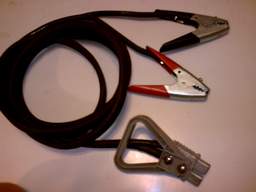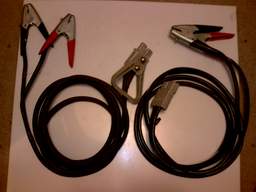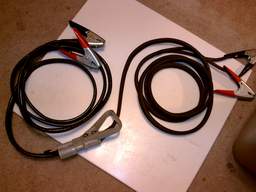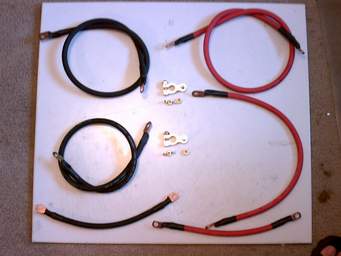
Click for full-size pic
This is a single set of cables. Like I said, it's not exactly what you'd get (I haven't made a demo set yet, and they won't be as beat-up as these.)

Click for full-size pic
Here's a pair of sets - both with clamps and Andersons. The next picture shows why I do this...

Now you see two sets "ganged" together - this makes for about 50 feet of jumper space. Comes in handy...
The "Greylock" connector used for the jumper cable quick-connect will also work nicely for winches that aren't permanently mounted, or that have a quick-connect installed for easy removal and servicing. Even if the color is different, the connector is the same.



